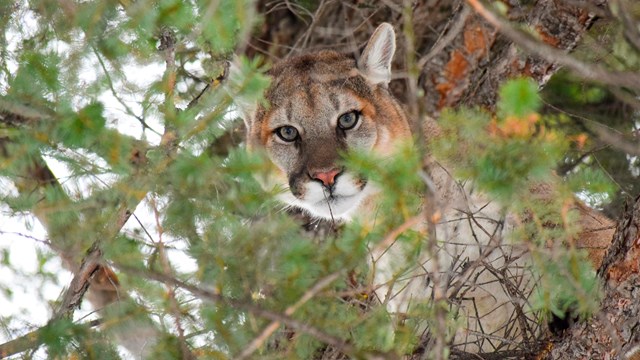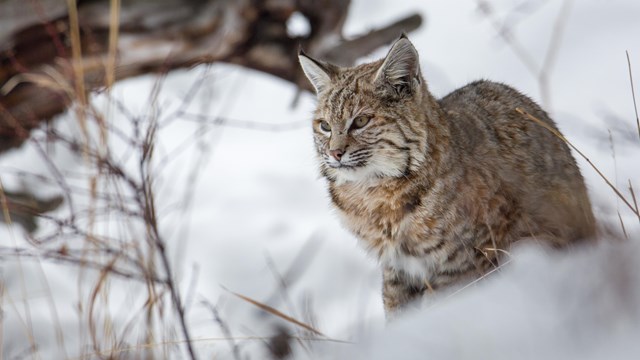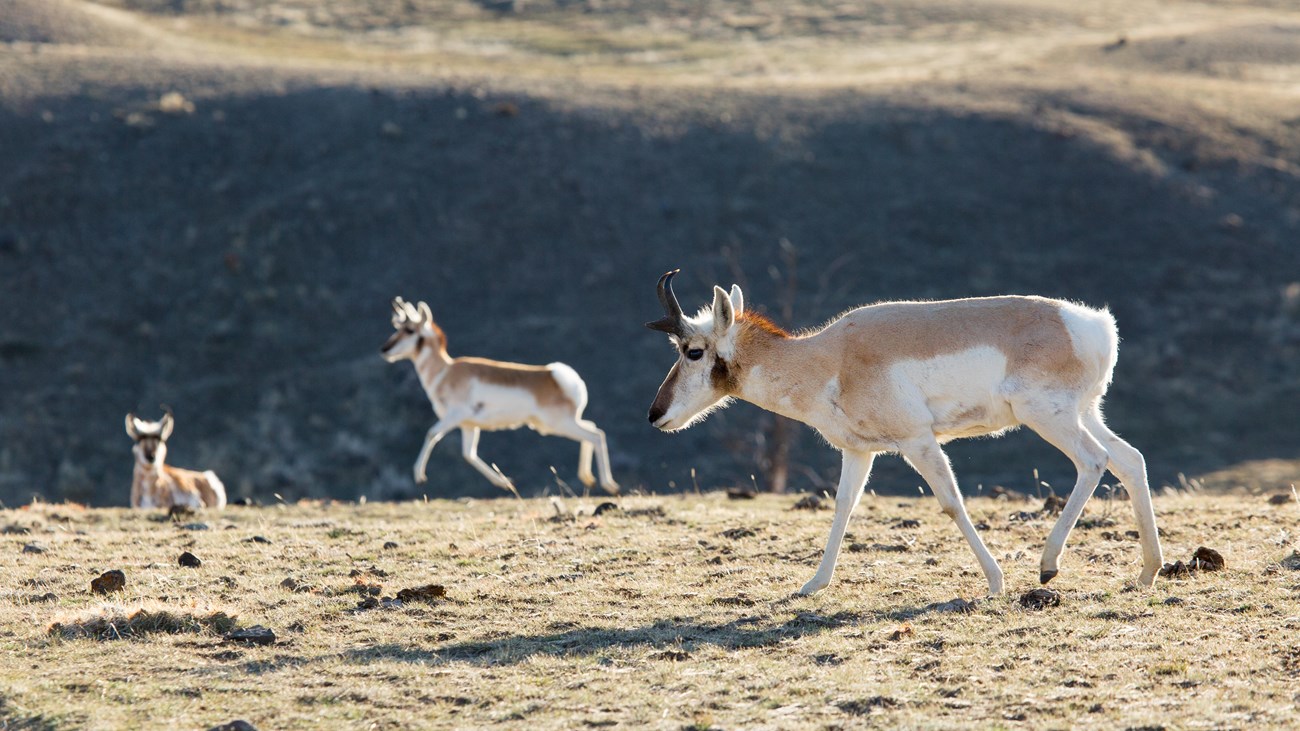
NPS/Neil Blake 
NPS Historical information suggests lynx were present, but uncommon, in Yellowstone National Park during 1880 to 1980. The presence and distribution of lynx in the park was documented during 2001 to 2004, when several individuals were detected in the vicinity of Yellowstone Lake and the Central Plateau. A lynx was photographed in 2007 along the Gibbon River, and another lynx was observed near Indian Creek Campground in the northwestern portion of Yellowstone during 2010. Tracks of an individual were verified near the Northeast Entrance in 2014. Reliable detections of lynx continue to occur in surrounding National Forest System lands. Evidence suggests lynx successfully reproduce in the GYE, though production is limited. In 2000, the US Fish and Wildlife Service listed the lynx as “threatened” in the lower 48 states. Portions of the park and surrounding area is considered much of the critical habitat for the species in the Greater Yellowstone Ecosystem. HabitatLynx habitat in the Greater Yellowstone Ecosystem is often naturally patchy due to natural fire frequency and generally limited to conifer forests above 7,700 feet where the distribution of its primary prey, snowshoe hare, is often insufficient to support lynx residency and reproduction. The lower quality habitat means home ranges in this ecosystem are larger than those farther north, with lynx traveling long distances between foraging sites. ResourcesMurphy, K., T. Potter, J. Halfpenny, K. Gunther, T. Jones, and R. Lundberg. 2005. The elusive Canada lynx: Surveying for Yellowstone’s most secretive threatened carnivore. Yellowstone Science 13(2): 7–15. Murphy, K.M., T.M. Potter, J.C. Halfpenny, K.A. Gunther, M.T. Jones, P.A. Lundberg, and N.D. Berg. 2006. Distribution of Canada Lynx in Yellowstone National Park. Northwest Science 80(3):199–206. Murphy, S.C. and M.M. Meagher. 2000. The status of wolverines, lynx, and fishers in Yellowstone National Park. In A. P. Curlee, A. Gillesberg and D. Casey, ed., Greater Yellowstone predators: Ecology and conservation in a changing landscape, 57–62. Northern Rockies Conservation Cooperative and Yellowstone National Park. Ruggiero, L.F. et al. ed. 2000. Ecology and Conservation of Canada Lynx in the US. Boulder: University of Colorado. Squires, J.R. 2005. Conservation challenges of managing lynx. Yellowstone Science 13(2): 10–11. Squires, J.R. and R. Oakleaf. 2005. Movements of a male Canada lynx crossing the Greater Yellowstone Area, including highways. Northwest Science 79(2–3):196–201. |
Last updated: April 18, 2025



